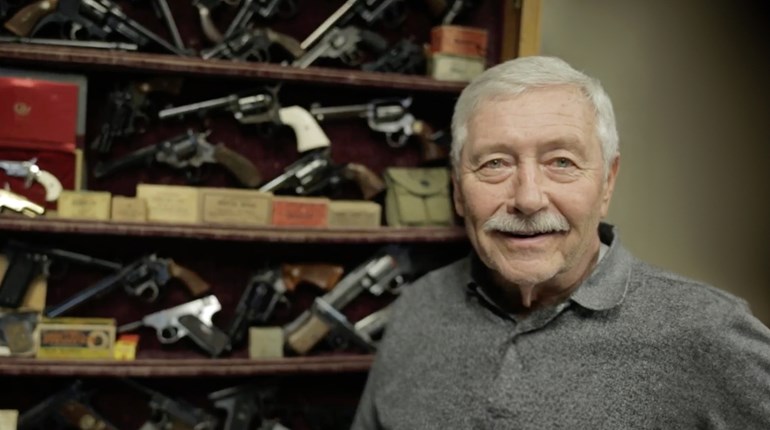** When you buy products through the links on our site, we may earn a commission that supports NRA's mission to protect, preserve and defend the Second Amendment. **
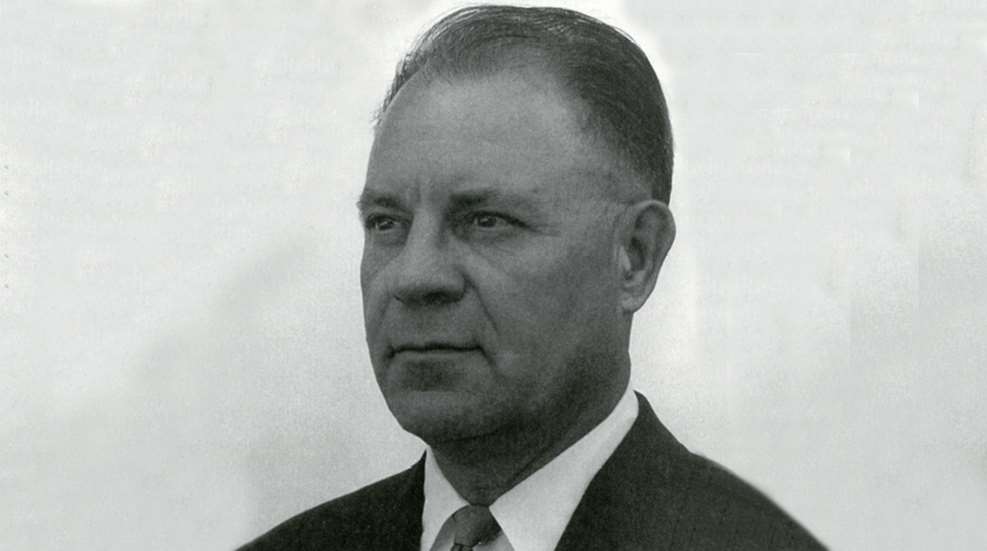
Just about every serious pistol competitor has heard of Harry Reeves. An Olympic shooter and World Shooting Championships medalist, six-time National Pistol Champion at the National Matches (1940, '41, '46, '48, '53 and '54), holder of countless national records, state and regional titles. He was a former member of the NRA Board of Directors as well as a member—and at times chairman—of a number of NRA committees including Pistol, Law Enforcement, International Competitions, and Competition Rules and Programs. He worked as a referee and Protest Committee chairman at the National Matches and NRA Police Revolver Championships.
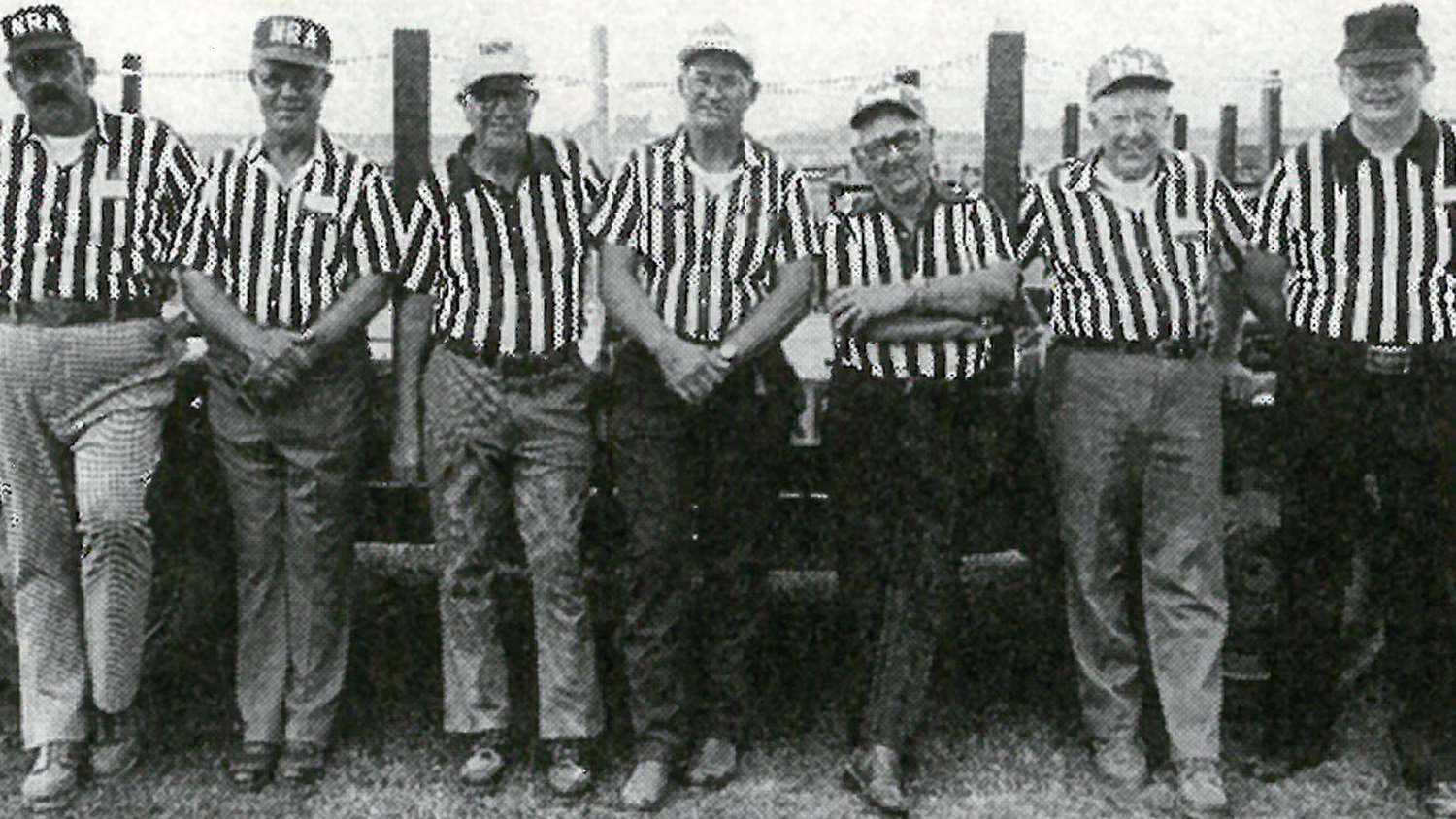 Harry Reeves was a principle contributor to the development of the International Shooting Union (UIT) pistol rules and served on the pistol jury in numerous international competitions. In recognition, the UIT awarded him its Gold Medallion and Certificate. Harry Reeves' professional life was as an active duty U.S. Marine from 1933 to 1937 and then again from 1940 to 1946. He then went into the Marine Corps Reserves, eventually retiring as a lieutenant colonel. In 1937, he started a 28-year career in the Detroit Police Department—starting as a patrolman and ending up as an inspector.
Harry Reeves was a principle contributor to the development of the International Shooting Union (UIT) pistol rules and served on the pistol jury in numerous international competitions. In recognition, the UIT awarded him its Gold Medallion and Certificate. Harry Reeves' professional life was as an active duty U.S. Marine from 1933 to 1937 and then again from 1940 to 1946. He then went into the Marine Corps Reserves, eventually retiring as a lieutenant colonel. In 1937, he started a 28-year career in the Detroit Police Department—starting as a patrolman and ending up as an inspector.
During World War II, he was the senior Marine selected, along with four others, to work behind the lines in Nationalist China to primarily teach marksmanship to Chinese guerrillas so that they could better fight the Japanese invasion. This was part of a Sino-American Cooperative Organization treaty—a secret pact between President Franklin D. Roosevelt and Chiang Kai-shek. He worked primarily with the head of the Chinese secret police, Tai Li.
The above is just a tip of the iceberg as far as Harry's contribution to his country and the sport of competitive pistol shooting. His efforts certainly did not go unnoticed as he was given the Outstanding American Handgunner Award for 1993. With his passing at age 90 in 2001, it was a tremendous loss for the shooting community.
The following conversation was taped at the National Matches in 1988.
Grubar: When and how did you get started in competitive shooting?
Reeves: When I was a kid, I was taught to hunt first with a .22 rifle and then later with a shotgun—hunting quail and rabbit. When I went into the Marine Corps in 1933, I went through boot camp with both rifle and pistol, and qualified as an expert with both. Until 1936, when I first shot in competition, I hadn't done anything but qualification shooting.
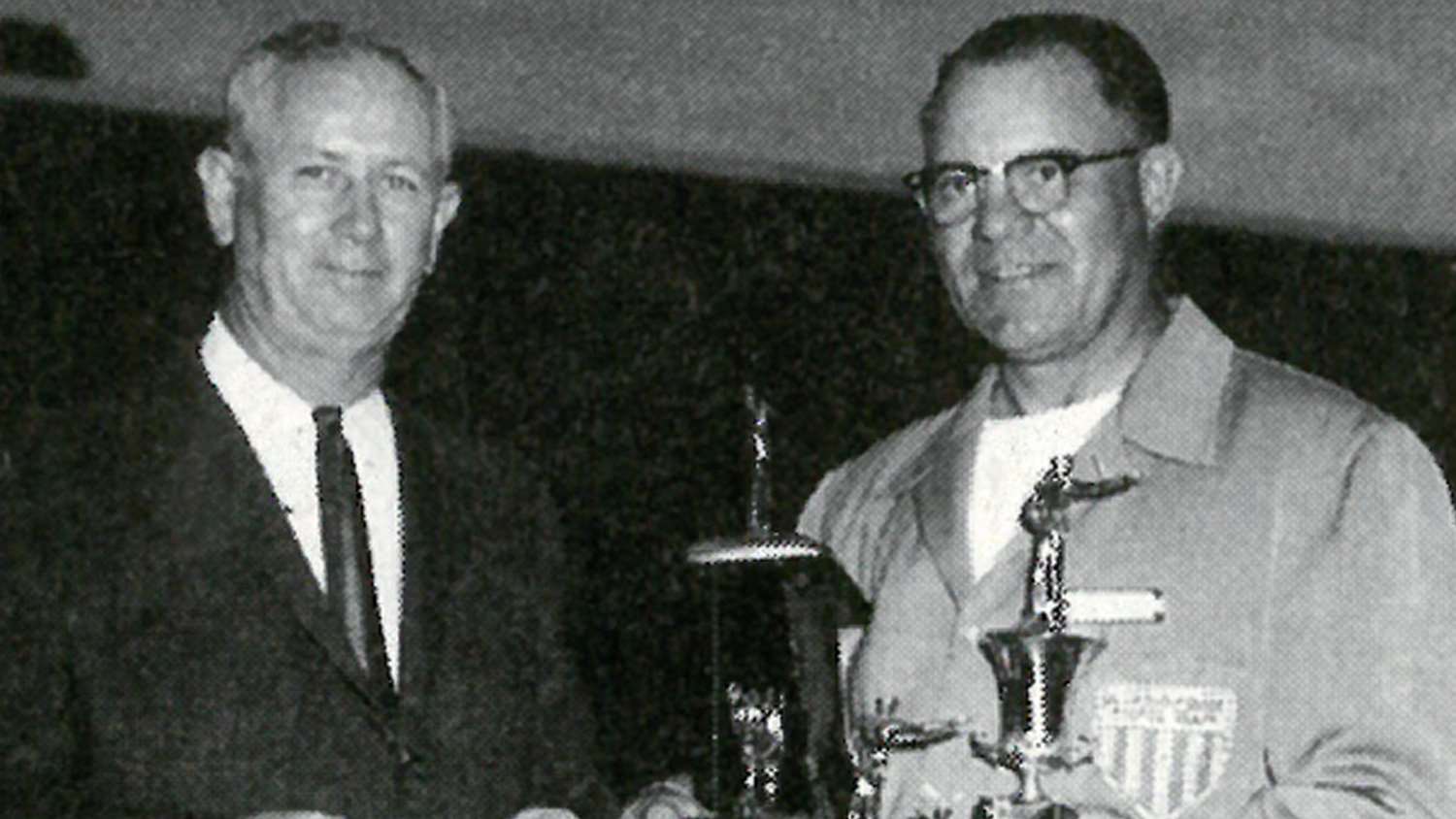 Grubar: Who really got you going on trying to compete, or did you pick it up on your own because you had to do it in the service?
Grubar: Who really got you going on trying to compete, or did you pick it up on your own because you had to do it in the service?
Reeves: In 1934, I was aboard the USS Lexington in the Marine detachment, and we went to the state of Washington for a three-month overhaul. I had nothing to do and lots of time on my hands, and a gunnery sergeant named Harry "Tubby" Dexter got me interested learning to shoot better.
We found out that there was a pistol range in the Lexington that had little to no usage. So Tubby said, "Why don't we go to the range and do a little pistol shooting with a .22?" I wound up going to Seattle on the ferry boat and bought myself a Model 199 Harrington & Richardson single-action Sportsman nine-shot revolver. I paid $5 a month for it—the total was about $17!
Tubby was not an especially good shot, but he knew how to coach. He would get me a box of cartridges every day, and I would go to the range and shoot. He had me shooting nothing but slow-fire for two or three weeks (50 shots slow-fire at 50 ft.). Then, later on, I shot timed-fire and then finally some rapid-fire without turning targets. By the end of the three-month periodI was shooting scores that were in the 280s and 290s.
The following year (1935), we had the Aircraft Battleforce Games, and I was the only one in the ship's detachment who qualified as expert. I wound up winning the championship that year. The next year the ship's team went to Guantanamo Bay, Cuba, for the All Navy Games, and we won the All Navy Team Championship and I took the individual title. From then on, of course, I was definitely interested in shooting!
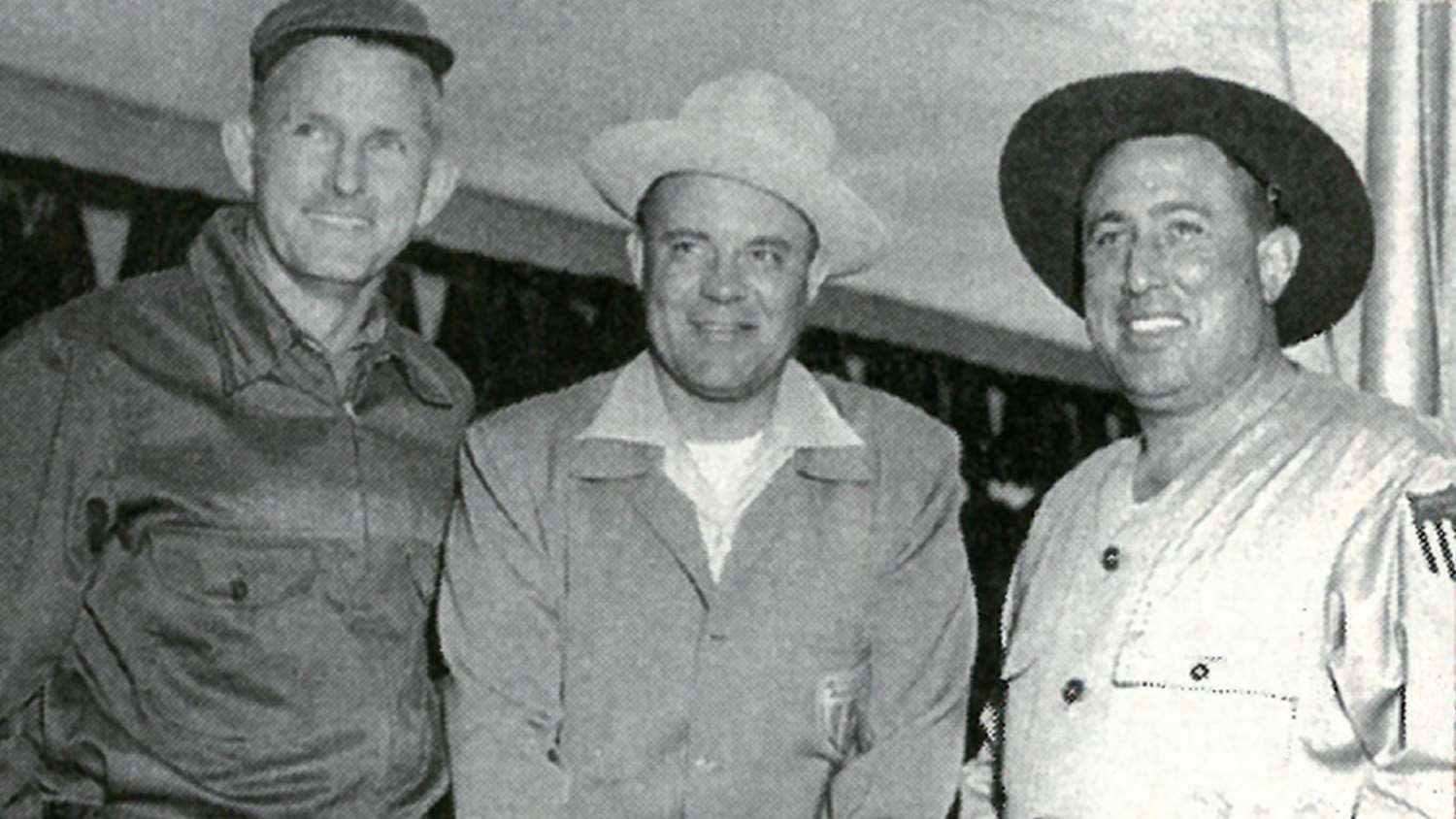 Grubar: Even though you had the Harrington & Richardson, did the Marine Corps supply you with equipment when you made the team?
Grubar: Even though you had the Harrington & Richardson, did the Marine Corps supply you with equipment when you made the team?
Reeves: No, we just had to draw a pistol from the armory. Then, late in 1936, I was transferred to Camp Matthews, CA, and I got a chance to do a little bit of shooting, but I had no equipment of any kind. Somebody then inquired why didn't I buy my own gun. So I went down to San Diego, and for $5 I bought a Colt .45 pistol from a man named J.D. Brotzman, an old German fellow who had a gunsmith shop.
Then somebody told me that there was a fellow in Los Angeles named Buchanan who was doing accuracy jobs on guns. Well I didn't even know what that meant, but I was talked into taking it up to him. So I put the pistol under my uniform and hitch-hiked from Camp Matthews to Los Angeles and took it to Buchanan. He said he would fix it up for me and charged me $10 for an accuracy job, and I shot that gun for about 10 years.
I used that gun to win the Marine Corps Western Division Championship with a new record score that put me on the team to go back to the All Marine Matches in 1937. I won that one also with another new record score.
Later, at Camp Matthews, Marine Captain David Shoup, who was just released from the hospital and was taking some time off from regular duties to recuperate, asked me if I wanted to practice with him on the range as he didn't want to shoot alone. I wasn't allowed to use the ranges because you had to have a commissioned officer with you in order to shoot. So, he and I shot every day. He had a full set of guns, and it as the first time I ever even knew there was such a thing as a set of competition guns for NRA competition. Shoup wasn't able to teach me much because I could shoot better than he could then, but he encouraged me to continue to shoot and compete. He said it was a good sport and the only sport that he takes part in. The last time I saw him he was brigadier general (General Shoup eventually became Commandant of the Marines).
Grubar: When did you get involved in three-gun competition?
Reeves: In 1937 I went to Camp Perry as a member of the Marine Corps Team. That was my first year at Perry. I can't remember where I got the money, but somehow I bought a Colt .38 revolver while we were training at Quantico, VA, and I had the .22 H&R revolver. None of the other Marine Pistol Team members wanted to shoot the three guns—all they wanted to fire was the .45. I asked Major Bill Whaling, the team captain, if I could shoot the whole thing, and he said OK. I shot the 199 H&R revolver in the .22 matches, and my unaltered Colt model in the center-fire and .45 matches. The only gun I did any good with was the H&R as far as placing was concerned. I tied for second place with U.S. Border Patrolman Charlie Askins and Marine Major William Richards in the .22 timed-fire match.
We had a shoot-off, and Askins came over and looked at my old H&R revolver and said, "Kid, you don't expect to beat me with that piece of junk, do you?" I didn't. However, it was the last time Askins ever beat me in target shooting!
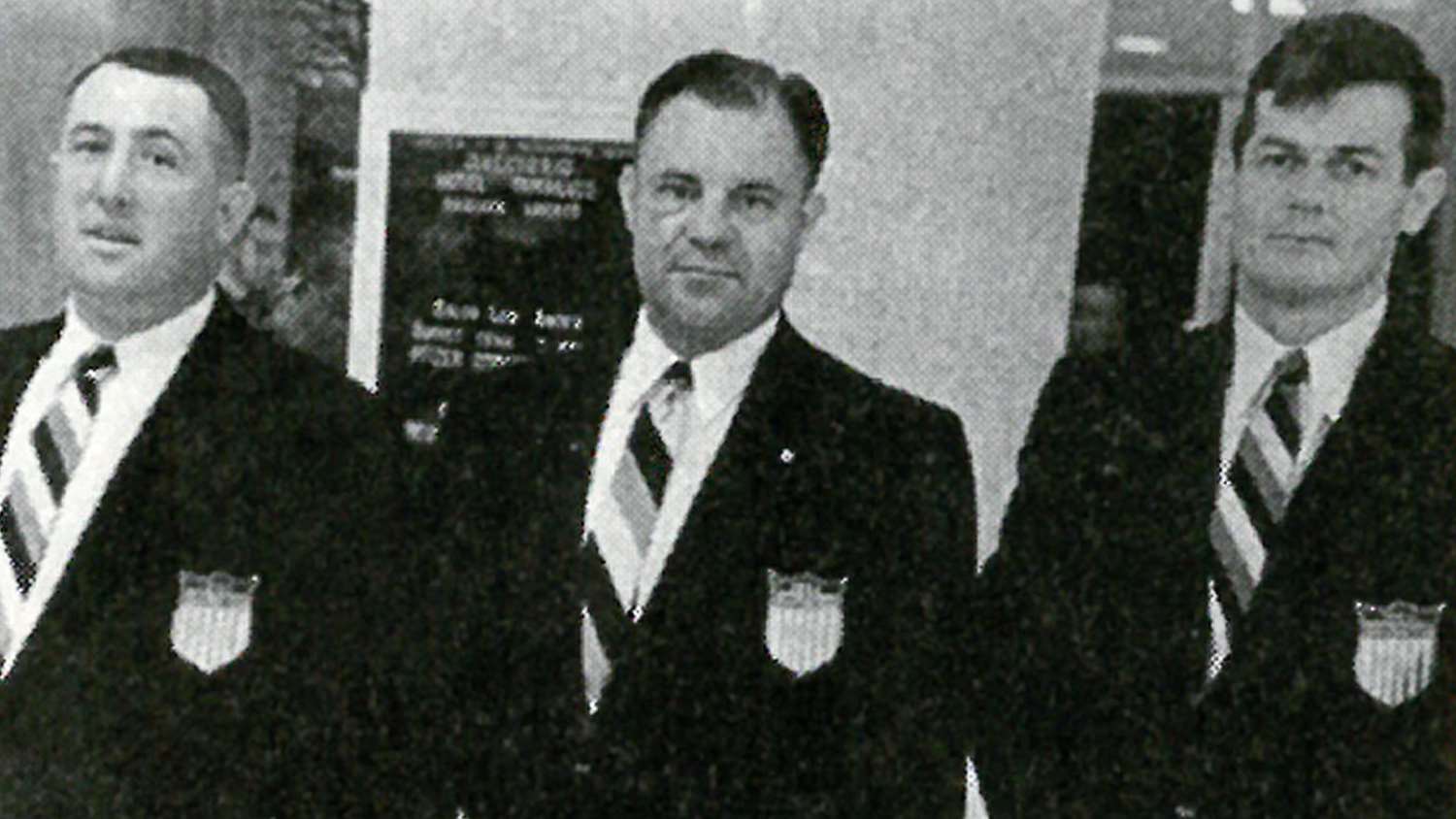 Grubar: Who do you think, other than yourself, was the best conventional pistol shooter?
Grubar: Who do you think, other than yourself, was the best conventional pistol shooter?
Reeves: Hershel Anderson, but there have been some other people that have been so good over such a long period of time—like Darius R. Young and Don Nygard. When you take all-around competition in pistol, I feel those two would be among the best. Of course, you never can rule out Huelet "Joe" Benner and Bill Blankenship! So many the really good shooters continue past their prime physical ability. That wasn't true of Hershel Anderson as he quit flat out at the very first time he was at his peak. [Editor's Note: Anderson won three National Pistol Championships, Benner won five, and Blankenship six, including five consecutively from 1960 through 1964. Years later, Brian Zins would earn 12 total and is probably not done yet.]
Grubar: You went into law enforcement when you left the Marine Corps and you went with the Detroit Police Department. Did you immediately become a team member or did you have to work your way on?
Reeves: I went in the department in November 1937, and I was out of the academy in January 1938. You had to be a legitimate member of a department for six months before you could represent it. It was in the fall of 1938 before I was eligible.
Grubar: When did you change your guns for three-gun competition?
Reeves: I was known by Marvin Driver, the Detroit PD team captain, to have been a shooter in the Marine Corps, primarily with a .45. I had nothing but promise, I suppose, with the .22 and .38, but I won a place on the Detroit team the first year. When we came to the National Matches in 1938 I had already won my place as number one man with the .45. Al Hemming (also Detroit police) who won the National Pistol Championship that year, was tops in the other two guns. The following year I was able to be number one on the team with all three guns.
I picked up a little short-barreled High Standard somewhere and I wrapped some lead soldering wire around the barrel for a little weight. I remember I whittled a pair of grips out of the end of one of the old wood ammunition boxes. I shot that and won some matches with it. I think it was about 1939 that the Colt Match Target Woodsman came out, and Lynn Davis, who was the Sales Manager for Colt, said that he would trade me a new Match Target Woodsman for my old High Standard. I think I paid $3 to $4 for the High Standard, so it was a good trade, and I took him up on it. The first 10 shots I fired with that gun was a 97 at 50 yards. I won't remember the bad scores, but that one I will!
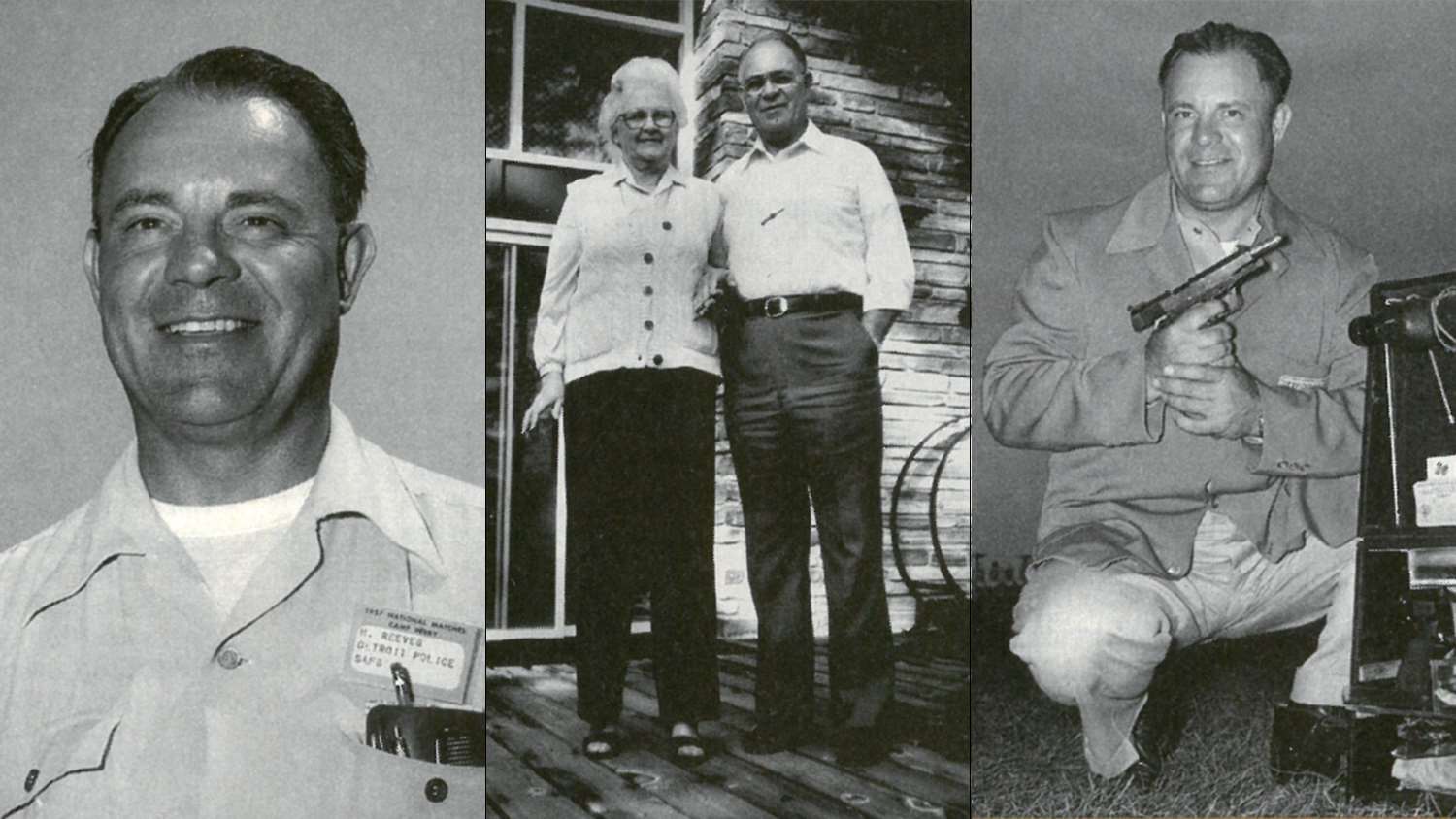
Grubar: Did you ever get into reloading or did you always shoot out of the box?
Reeves: I never had a round of .38 or .45 factory ammunition (other than government issue .45 while a Marine) I guess in my whole shooting career—I loaded my own and loaded ammunition for sale. I borrowed money and bought a Star Reloader and at one time I kept all of the fired primers—I ended up with nine cases full of fired primers. It amounted to a little bit over 6 million .38 and .45 rounds that I had loaded. Actually, I paid for most of my household expenses for quite awhile with reloading and all my shooting costs. As far as I'm concerned, the reloads were as good as anything I could buy.
Grubar: Did you get into anything fancy or extra ordinary when reloading?
Reeves: No. I cast my bullets two or three evenings a week, and then on nights and weekends I would load the ammunition. Quite a number of shooters bought my reloads, and also a couple of small police departments did likewise for their training. I had no problem with the ammunition and nobody ever complained about it.
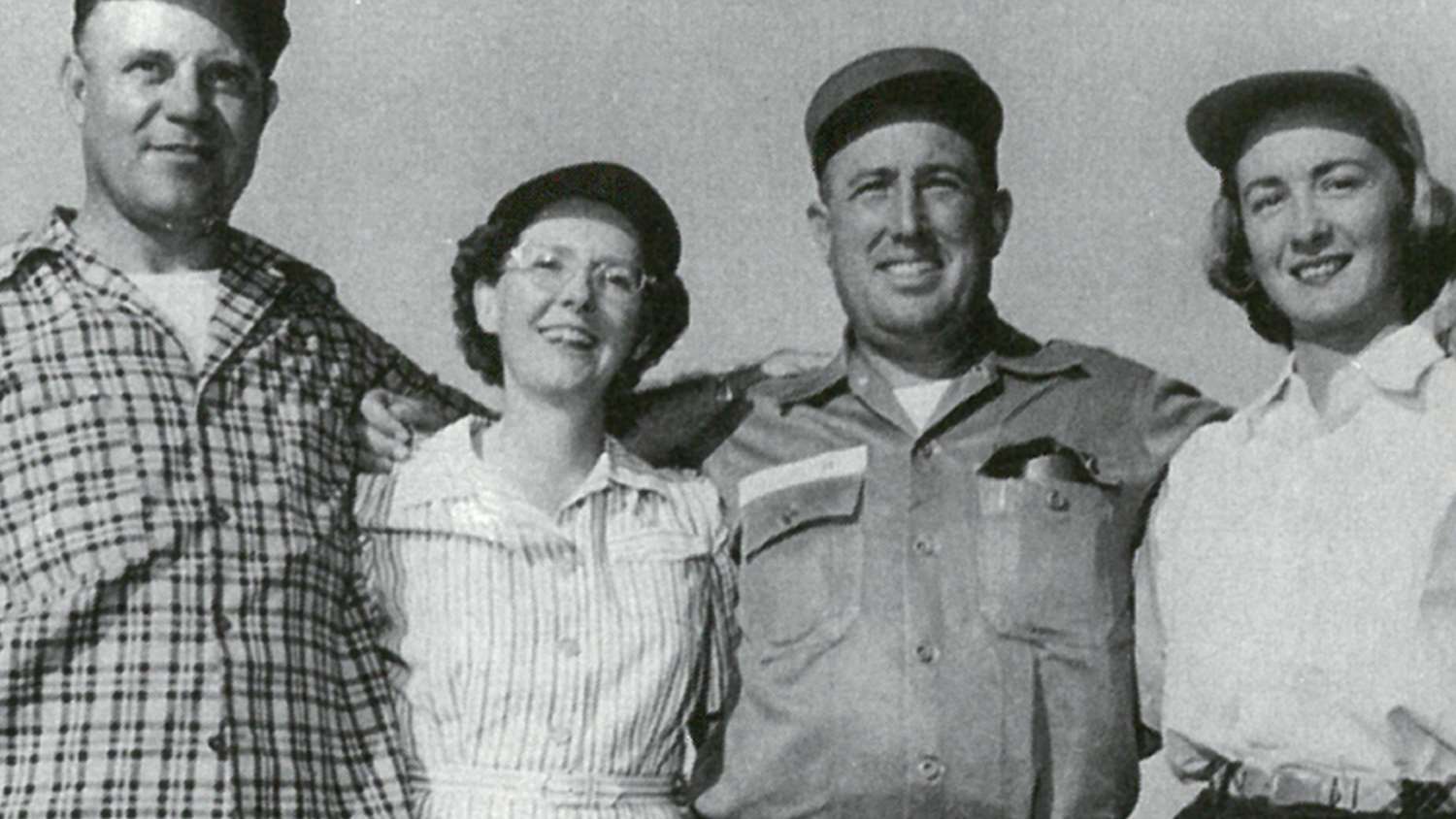 Grubar: When you were with the Detroit PD, did you get into any other competition—like police combat?
Grubar: When you were with the Detroit PD, did you get into any other competition—like police combat?
Reeves: I was always interested in quick draw and aerial shooting, and whenever the opportunity arose, I worked on it. I got more pleasure out of that than bullseye. I got so that I could hit aerial targets pretty well with all three guns. I started out using clay pigeons, and on quick draw I could throw two clay pigeons and then draw two .45s and break both of them at the same time. I did this type of shooting before up to half million people in public relations work in Detroit and southeastern Michigan.
Then, with the .22 and .38, I used to throw up squares that I sawed off of 2x2s and shot at them. Of course, as time went on it got to where there were very few places you could do that kind of shooting, so I gradually dropped out of it.
I was doing a lot of that type of shooting at Quantico in 1940. We would go down behind the rifle range pits when there was no shooting going on, and I did a lot of it down there using Marine Corps ammunition.
Grubar: How did you get into the international competition?
Reeves: It was while I was with the Detroit Police. I tried out of the 1948 team and won a place but got hurt shortly after and had to be replaced. Then, in 1949, I made the squad that competed in the World Championships in Argentina where I shot my .22 Colt Match Target Woodsman in free pistol. As I recall, in 1948 nobody had a free pistol. Carl Frederick, a former NRA president, loaned Joe Benner a single-shot Smith & Wesson pistol, and Joe did very well with it. The first free pistol I ever saw was in 1949 when I borrowed on from a fellow who had "liberated" it in Germany—it was a pre-World War II Anschutz. I took that to Argentina, and I got to shoot 150 or 200 rounds with it before we went. When we got there I practiced few days with it and then won the silver medal. I really should have taken the gold, but I shot the third shot of the first target on the wrong target! I ended up with a 547, while a Swiss was first with 548. Later that year I bought one of the first Hammerli pistols—the London Model—which conformed to the existing British laws.
Then, in 1952, we went to Oslo for the World Championships, and I won the centerfire championship with a new record, and our team placed first through fourth, with all of us shooting revolvers. All of the European and South American teams were shooting semi-automatic pistols, mostly Lugers and Lahtis. Just two years later, for the World Championships in 1954 at Caracas, Venezuela, every one of those European teams came shooting revolvers! What did we do? We all shifted to autos. The Soviets won in 1954.
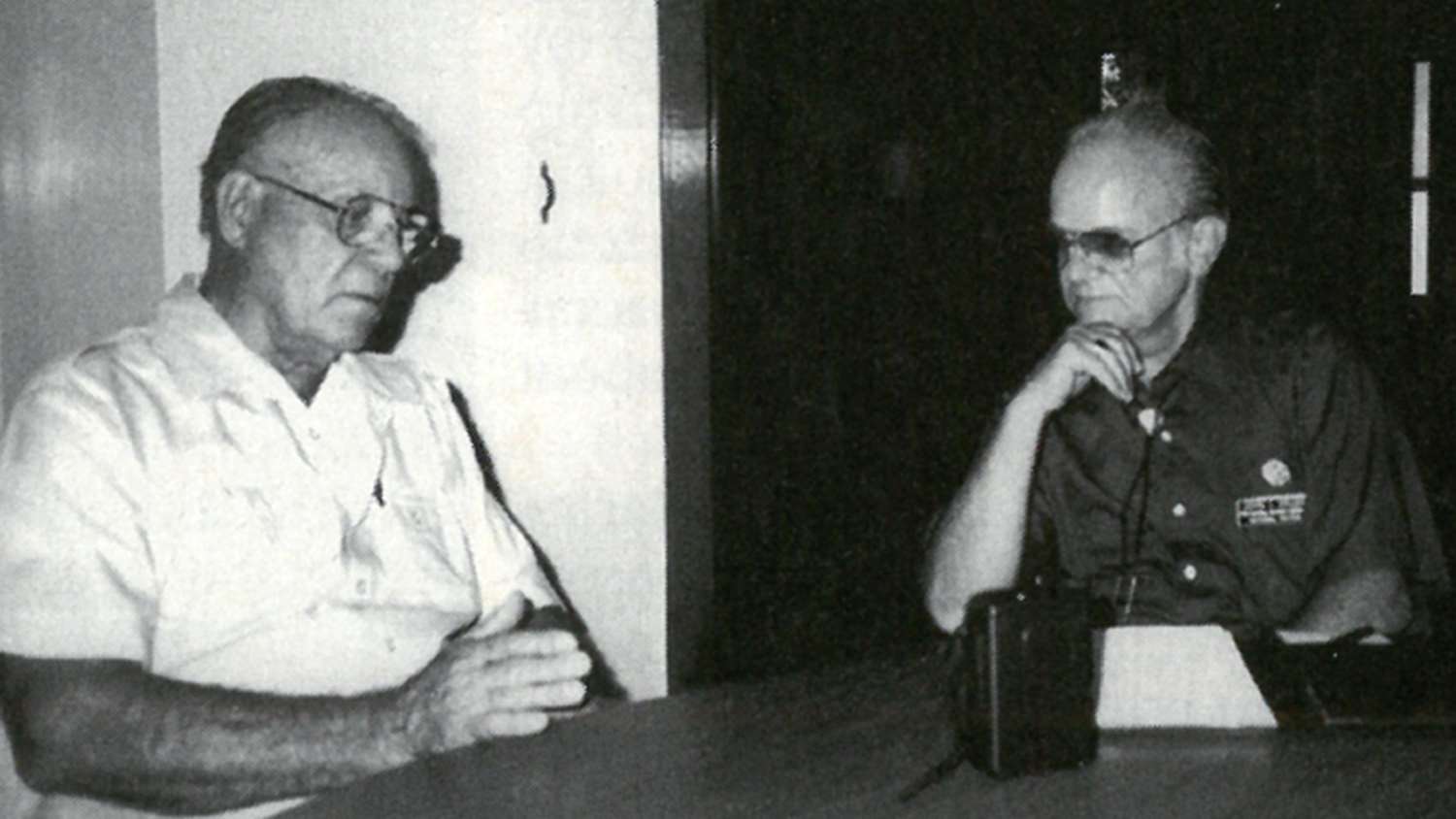 Grubar: What tournaments do you remember the most?
Grubar: What tournaments do you remember the most?
Reeves: The one that sticks out in my mind was at the National Matches in 1953 or 1954. I had pneumonia and was in bed all night with a Navy doctor watching over me, and I still won the .45 aggregate the next day. The one I think of most an NRA-sanctioned 2700 aggregate tournament at Ann Arbor, MI, in 1950. I had been working all summer on building my home, and I had a wrist on me that was just like iron from driving nails. The date before I went to this tournament, I had just finished putting a face board all roundly house with big nails, and my hand and wrist was swollen from doing that. In that tournament I fired a 2655—nobody had ever been over 2640 at that point.
We got through about 3 p.m. Sunday afternoon, and somebody suggested that we fire another match. So we all put a buck in for a Camp Perry Course match. I don't remember who won it, but the statistical officer made the mistake of combining both scores and sending them in to NRA. I appealed to the NRA Protest Committee for recognition of my 2655, but they turned me down.
Grubar: When did you actually "retire" from competitive shooting?
Reeves: In 1963. For about five years I hadn't had a chance to fire a shot or practice because of my job in law enforcement. I was still going with the Detroit police team on weekend trips and was in charge of the team on longer trips. I went to the Invitational Police Match at Indiana University in September of 1963, where, even though I had not been able to practice, I got a 2635. I said this would be a good time to quit. So I put my guns in the box, and I never opened the box again for about five years.

Even after retirement, Reeves (second from l.) returned to the National Matches as a referee.
During World War II, he was the senior Marine selected, along with four others, to work behind the lines in Nationalist China to primarily teach marksmanship to Chinese guerrillas so that they could better fight the Japanese invasion. This was part of a Sino-American Cooperative Organization treaty—a secret pact between President Franklin D. Roosevelt and Chiang Kai-shek. He worked primarily with the head of the Chinese secret police, Tai Li.
The above is just a tip of the iceberg as far as Harry's contribution to his country and the sport of competitive pistol shooting. His efforts certainly did not go unnoticed as he was given the Outstanding American Handgunner Award for 1993. With his passing at age 90 in 2001, it was a tremendous loss for the shooting community.
The following conversation was taped at the National Matches in 1988.
Grubar: When and how did you get started in competitive shooting?
Reeves: When I was a kid, I was taught to hunt first with a .22 rifle and then later with a shotgun—hunting quail and rabbit. When I went into the Marine Corps in 1933, I went through boot camp with both rifle and pistol, and qualified as an expert with both. Until 1936, when I first shot in competition, I hadn't done anything but qualification shooting.

Indiana State Police Col. John J. Barton presents Reeves with trophies he won at the 1961 Indiana State Police Invitational.
Reeves: In 1934, I was aboard the USS Lexington in the Marine detachment, and we went to the state of Washington for a three-month overhaul. I had nothing to do and lots of time on my hands, and a gunnery sergeant named Harry "Tubby" Dexter got me interested learning to shoot better.
We found out that there was a pistol range in the Lexington that had little to no usage. So Tubby said, "Why don't we go to the range and do a little pistol shooting with a .22?" I wound up going to Seattle on the ferry boat and bought myself a Model 199 Harrington & Richardson single-action Sportsman nine-shot revolver. I paid $5 a month for it—the total was about $17!
Tubby was not an especially good shot, but he knew how to coach. He would get me a box of cartridges every day, and I would go to the range and shoot. He had me shooting nothing but slow-fire for two or three weeks (50 shots slow-fire at 50 ft.). Then, later on, I shot timed-fire and then finally some rapid-fire without turning targets. By the end of the three-month periodI was shooting scores that were in the 280s and 290s.
The following year (1935), we had the Aircraft Battleforce Games, and I was the only one in the ship's detachment who qualified as expert. I wound up winning the championship that year. The next year the ship's team went to Guantanamo Bay, Cuba, for the All Navy Games, and we won the All Navy Team Championship and I took the individual title. From then on, of course, I was definitely interested in shooting!

Joe Benner, Reeves and Art Jackson at the 1954 World UIT Championships in Caracas, Venezuela.
Reeves: No, we just had to draw a pistol from the armory. Then, late in 1936, I was transferred to Camp Matthews, CA, and I got a chance to do a little bit of shooting, but I had no equipment of any kind. Somebody then inquired why didn't I buy my own gun. So I went down to San Diego, and for $5 I bought a Colt .45 pistol from a man named J.D. Brotzman, an old German fellow who had a gunsmith shop.
Then somebody told me that there was a fellow in Los Angeles named Buchanan who was doing accuracy jobs on guns. Well I didn't even know what that meant, but I was talked into taking it up to him. So I put the pistol under my uniform and hitch-hiked from Camp Matthews to Los Angeles and took it to Buchanan. He said he would fix it up for me and charged me $10 for an accuracy job, and I shot that gun for about 10 years.
I used that gun to win the Marine Corps Western Division Championship with a new record score that put me on the team to go back to the All Marine Matches in 1937. I won that one also with another new record score.
Later, at Camp Matthews, Marine Captain David Shoup, who was just released from the hospital and was taking some time off from regular duties to recuperate, asked me if I wanted to practice with him on the range as he didn't want to shoot alone. I wasn't allowed to use the ranges because you had to have a commissioned officer with you in order to shoot. So, he and I shot every day. He had a full set of guns, and it as the first time I ever even knew there was such a thing as a set of competition guns for NRA competition. Shoup wasn't able to teach me much because I could shoot better than he could then, but he encouraged me to continue to shoot and compete. He said it was a good sport and the only sport that he takes part in. The last time I saw him he was brigadier general (General Shoup eventually became Commandant of the Marines).
Grubar: When did you get involved in three-gun competition?
Reeves: In 1937 I went to Camp Perry as a member of the Marine Corps Team. That was my first year at Perry. I can't remember where I got the money, but somehow I bought a Colt .38 revolver while we were training at Quantico, VA, and I had the .22 H&R revolver. None of the other Marine Pistol Team members wanted to shoot the three guns—all they wanted to fire was the .45. I asked Major Bill Whaling, the team captain, if I could shoot the whole thing, and he said OK. I shot the 199 H&R revolver in the .22 matches, and my unaltered Colt model in the center-fire and .45 matches. The only gun I did any good with was the H&R as far as placing was concerned. I tied for second place with U.S. Border Patrolman Charlie Askins and Marine Major William Richards in the .22 timed-fire match.
We had a shoot-off, and Askins came over and looked at my old H&R revolver and said, "Kid, you don't expect to beat me with that piece of junk, do you?" I didn't. However, it was the last time Askins ever beat me in target shooting!

At the 1955 National Mid-Winter Matches in Tampa, FL, Joe White stands with Reeves and Benner.
Reeves: Hershel Anderson, but there have been some other people that have been so good over such a long period of time—like Darius R. Young and Don Nygard. When you take all-around competition in pistol, I feel those two would be among the best. Of course, you never can rule out Huelet "Joe" Benner and Bill Blankenship! So many the really good shooters continue past their prime physical ability. That wasn't true of Hershel Anderson as he quit flat out at the very first time he was at his peak. [Editor's Note: Anderson won three National Pistol Championships, Benner won five, and Blankenship six, including five consecutively from 1960 through 1964. Years later, Brian Zins would earn 12 total and is probably not done yet.]
Grubar: You went into law enforcement when you left the Marine Corps and you went with the Detroit Police Department. Did you immediately become a team member or did you have to work your way on?
Reeves: I went in the department in November 1937, and I was out of the academy in January 1938. You had to be a legitimate member of a department for six months before you could represent it. It was in the fall of 1938 before I was eligible.
Grubar: When did you change your guns for three-gun competition?
Reeves: I was known by Marvin Driver, the Detroit PD team captain, to have been a shooter in the Marine Corps, primarily with a .45. I had nothing but promise, I suppose, with the .22 and .38, but I won a place on the Detroit team the first year. When we came to the National Matches in 1938 I had already won my place as number one man with the .45. Al Hemming (also Detroit police) who won the National Pistol Championship that year, was tops in the other two guns. The following year I was able to be number one on the team with all three guns.
I picked up a little short-barreled High Standard somewhere and I wrapped some lead soldering wire around the barrel for a little weight. I remember I whittled a pair of grips out of the end of one of the old wood ammunition boxes. I shot that and won some matches with it. I think it was about 1939 that the Colt Match Target Woodsman came out, and Lynn Davis, who was the Sales Manager for Colt, said that he would trade me a new Match Target Woodsman for my old High Standard. I think I paid $3 to $4 for the High Standard, so it was a good trade, and I took him up on it. The first 10 shots I fired with that gun was a 97 at 50 yards. I won't remember the bad scores, but that one I will!

Left: Reeves at the 1957 National Matches. Middle: Reeves with his wife, Florence, at their Andrews, NC, home. Right: As a member of the Detroit Police Department team, Reeves holds his .45.
Grubar: Did you ever get into reloading or did you always shoot out of the box?
Reeves: I never had a round of .38 or .45 factory ammunition (other than government issue .45 while a Marine) I guess in my whole shooting career—I loaded my own and loaded ammunition for sale. I borrowed money and bought a Star Reloader and at one time I kept all of the fired primers—I ended up with nine cases full of fired primers. It amounted to a little bit over 6 million .38 and .45 rounds that I had loaded. Actually, I paid for most of my household expenses for quite awhile with reloading and all my shooting costs. As far as I'm concerned, the reloads were as good as anything I could buy.
Grubar: Did you get into anything fancy or extra ordinary when reloading?
Reeves: No. I cast my bullets two or three evenings a week, and then on nights and weekends I would load the ammunition. Quite a number of shooters bought my reloads, and also a couple of small police departments did likewise for their training. I had no problem with the ammunition and nobody ever complained about it.

Reeves poses with (l. to r.) Gertrude Blackstrom, Joe Benner and Lucy Chambliss.
Reeves: I was always interested in quick draw and aerial shooting, and whenever the opportunity arose, I worked on it. I got more pleasure out of that than bullseye. I got so that I could hit aerial targets pretty well with all three guns. I started out using clay pigeons, and on quick draw I could throw two clay pigeons and then draw two .45s and break both of them at the same time. I did this type of shooting before up to half million people in public relations work in Detroit and southeastern Michigan.
Then, with the .22 and .38, I used to throw up squares that I sawed off of 2x2s and shot at them. Of course, as time went on it got to where there were very few places you could do that kind of shooting, so I gradually dropped out of it.
I was doing a lot of that type of shooting at Quantico in 1940. We would go down behind the rifle range pits when there was no shooting going on, and I did a lot of it down there using Marine Corps ammunition.
Grubar: How did you get into the international competition?
Reeves: It was while I was with the Detroit Police. I tried out of the 1948 team and won a place but got hurt shortly after and had to be replaced. Then, in 1949, I made the squad that competed in the World Championships in Argentina where I shot my .22 Colt Match Target Woodsman in free pistol. As I recall, in 1948 nobody had a free pistol. Carl Frederick, a former NRA president, loaned Joe Benner a single-shot Smith & Wesson pistol, and Joe did very well with it. The first free pistol I ever saw was in 1949 when I borrowed on from a fellow who had "liberated" it in Germany—it was a pre-World War II Anschutz. I took that to Argentina, and I got to shoot 150 or 200 rounds with it before we went. When we got there I practiced few days with it and then won the silver medal. I really should have taken the gold, but I shot the third shot of the first target on the wrong target! I ended up with a 547, while a Swiss was first with 548. Later that year I bought one of the first Hammerli pistols—the London Model—which conformed to the existing British laws.
Then, in 1952, we went to Oslo for the World Championships, and I won the centerfire championship with a new record, and our team placed first through fourth, with all of us shooting revolvers. All of the European and South American teams were shooting semi-automatic pistols, mostly Lugers and Lahtis. Just two years later, for the World Championships in 1954 at Caracas, Venezuela, every one of those European teams came shooting revolvers! What did we do? We all shifted to autos. The Soviets won in 1954.

Reeves chats with the author, John Grubar, during the taping of this interview at the National Matches in 1988.
Reeves: The one that sticks out in my mind was at the National Matches in 1953 or 1954. I had pneumonia and was in bed all night with a Navy doctor watching over me, and I still won the .45 aggregate the next day. The one I think of most an NRA-sanctioned 2700 aggregate tournament at Ann Arbor, MI, in 1950. I had been working all summer on building my home, and I had a wrist on me that was just like iron from driving nails. The date before I went to this tournament, I had just finished putting a face board all roundly house with big nails, and my hand and wrist was swollen from doing that. In that tournament I fired a 2655—nobody had ever been over 2640 at that point.
We got through about 3 p.m. Sunday afternoon, and somebody suggested that we fire another match. So we all put a buck in for a Camp Perry Course match. I don't remember who won it, but the statistical officer made the mistake of combining both scores and sending them in to NRA. I appealed to the NRA Protest Committee for recognition of my 2655, but they turned me down.
Grubar: When did you actually "retire" from competitive shooting?
Reeves: In 1963. For about five years I hadn't had a chance to fire a shot or practice because of my job in law enforcement. I was still going with the Detroit police team on weekend trips and was in charge of the team on longer trips. I went to the Invitational Police Match at Indiana University in September of 1963, where, even though I had not been able to practice, I got a 2635. I said this would be a good time to quit. So I put my guns in the box, and I never opened the box again for about five years.














